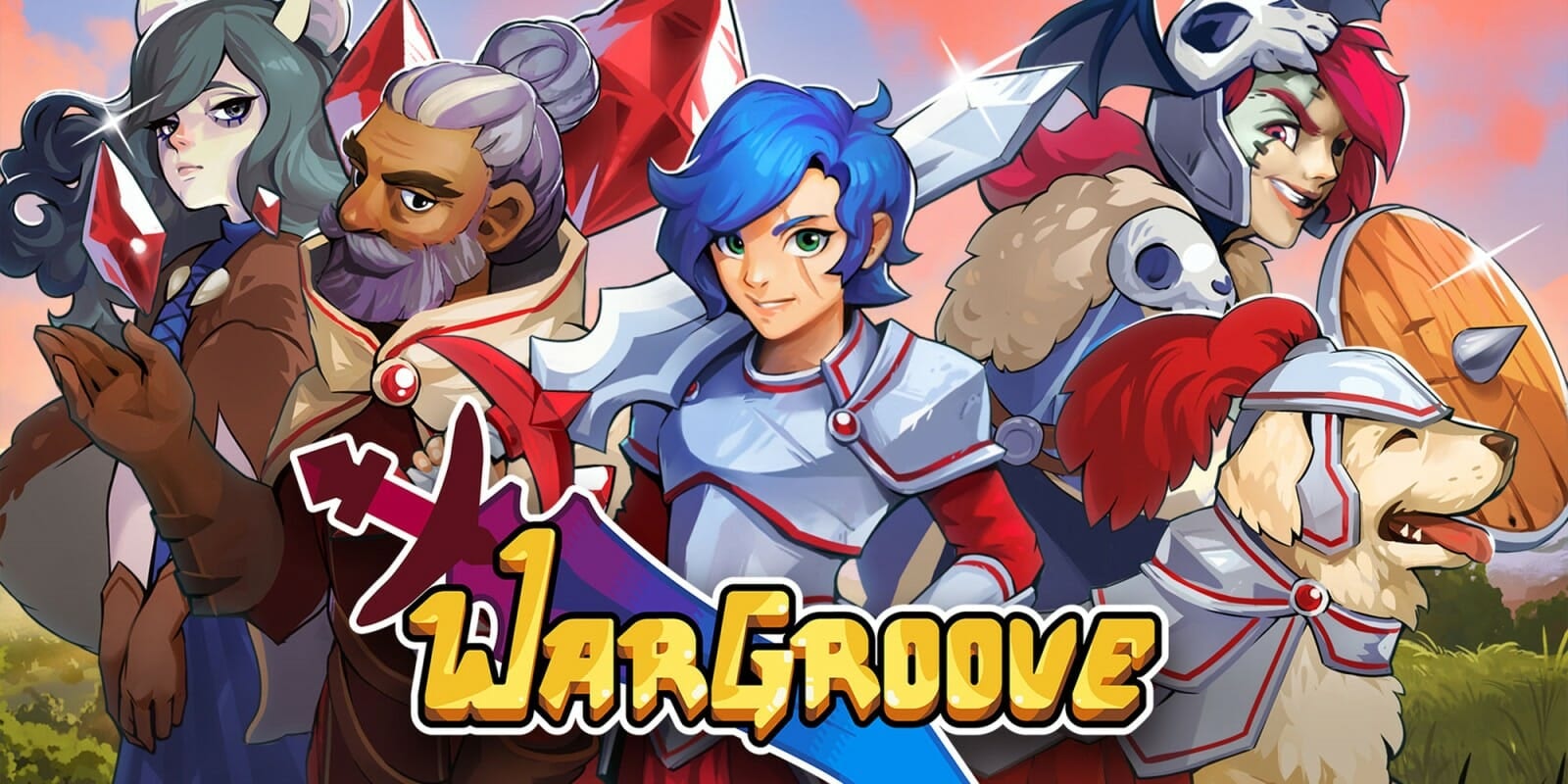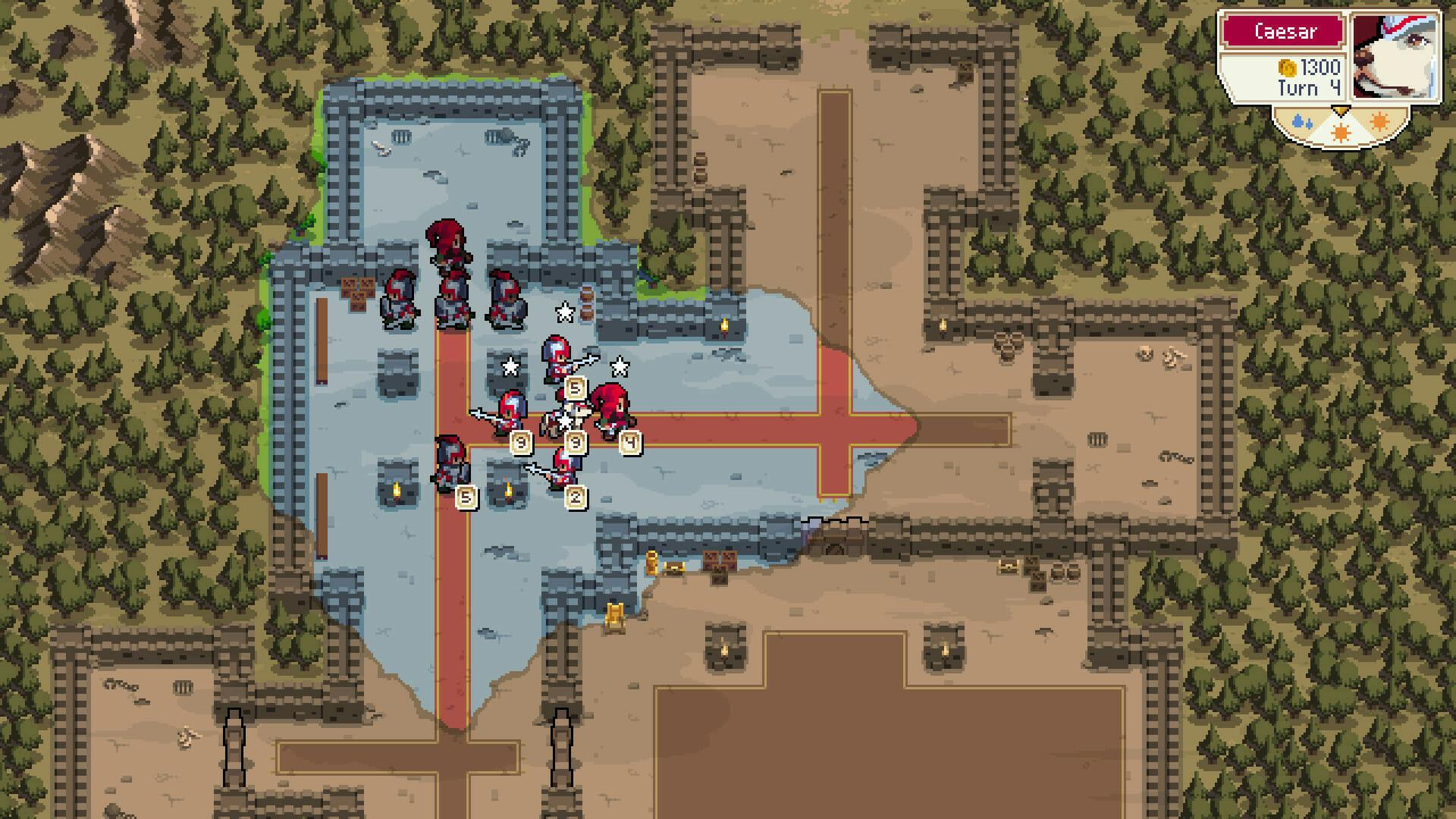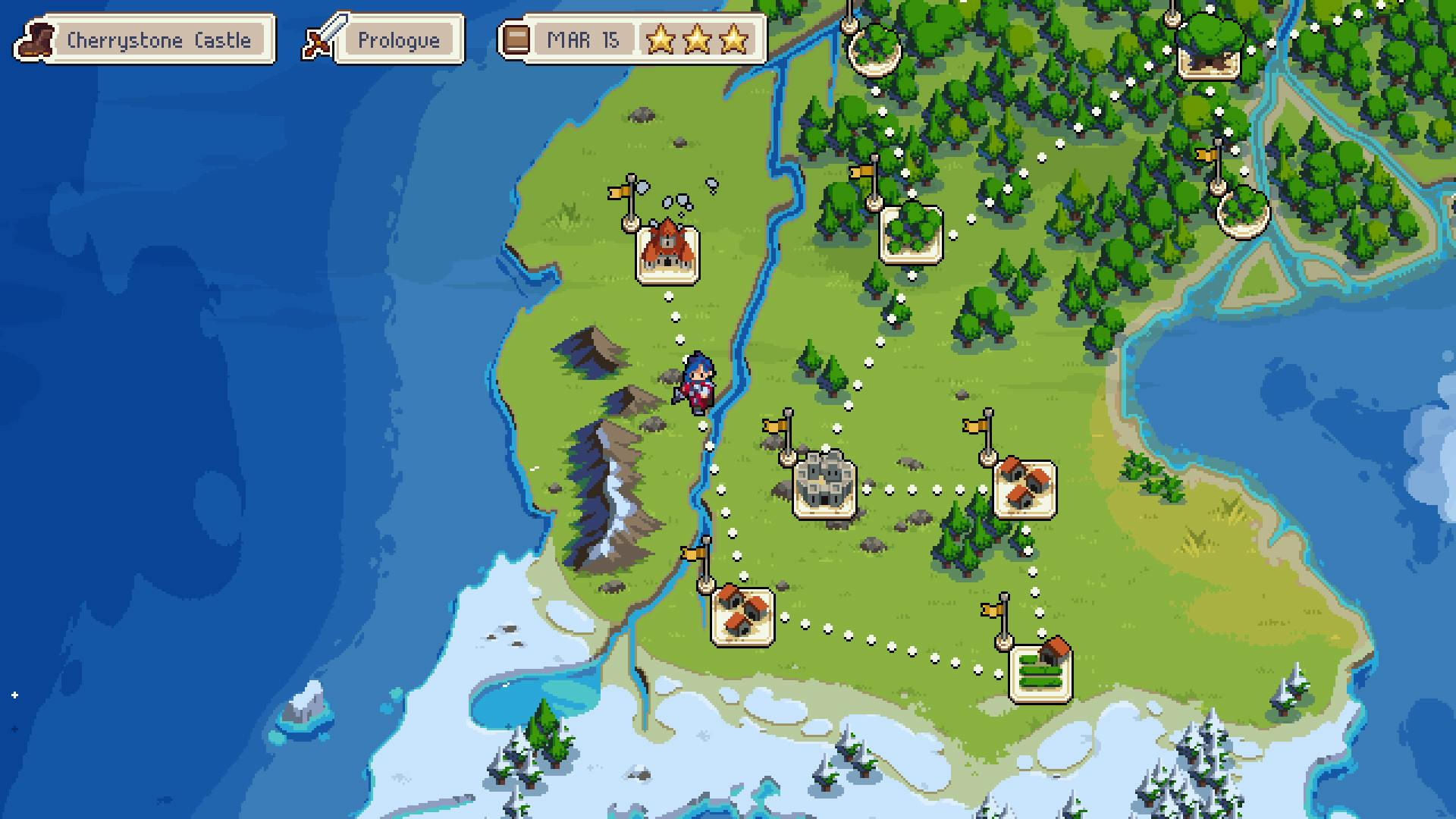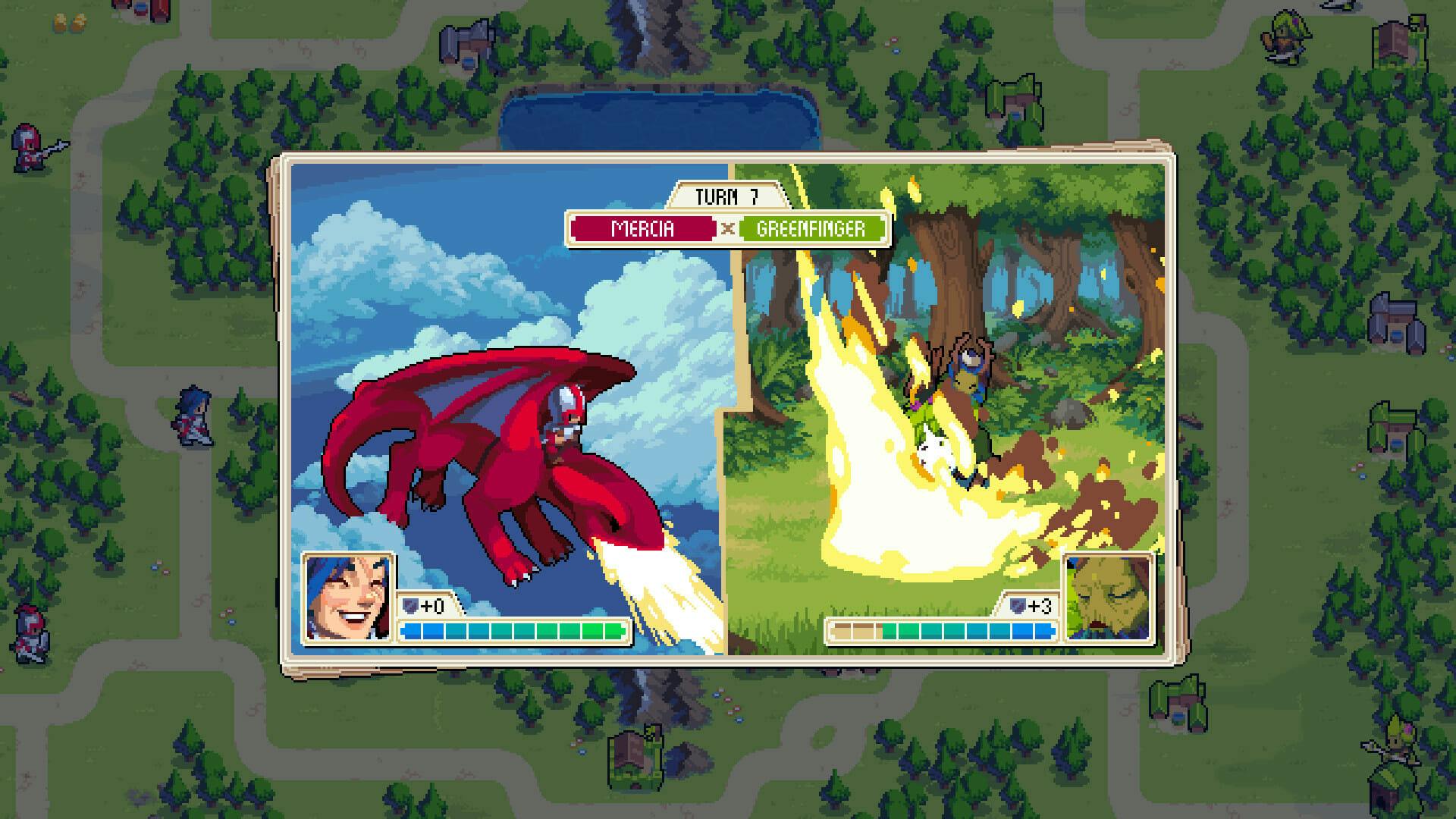Playing Chucklefish’s new strategy game conjured my fondest memories of Fire Emblem and Advance Wars. That’s not meant to be dismissive—Wargroove wears its influences proudly and honors what came before with a familiar but fresh experience.
In fact, the game explicitly sells itself as aiming to “recreate the charm and accessibility of the titles that inspired it whilst bringing modern technology into the formula.” With excellent, emotive, pixel-art character models, Wargroove plays as if it were ripped right out of the late 2000s. Like the Nintendo games it emulates, the near-perfect attention to detail and highly intricate systems at work make playing through this campaign a consistent joy.
A brilliant tutorial mission introduces players to the world of the Cherrystone Kingdom. Controlling the villainous vampire Sigrid, players infiltrate King Mercival’s castle to swiftly assassinate him. Though her motivations are clear, the path forward is not. Various essential mechanics introduce themselves in waves. The game first teaches you movement, eases you into combat, and finally loosens the reins to let you roam freely, building to regicide.
This inciting event kicks off a noble quest for Mercia, the next ruler in line after her father’s death. Dealing with her guilt as well as the weight of her new position, she sets out to chase down the rest of the Felheim Legion with which she now finds herself at war.
While Wargroove boasts 12 playable commanders, the game belongs to Mercia. The narrative comes to life through her relationships, the player sees combat through her eyes, and all goings-on must eventually return to the context of what it means for the Cherrystone Kingdom.
In this way, gameplay weaves in moments of character-driven storytelling. The game doesn’t break its presentation to portray cutscenes, as commanders chatter to one another from across the battlefield after strategic plays. Every mission in Wargroove’s extensive campaign is built around the same fail state—the loss of your Commander. The agency this game provides to the player is that of an overseer; commanders are the key to optimizing every piece laid out on the battlefield.
Tactics games are often concerned with moment-to-moment decision making just as much as they are any long-term planning. There’s no fun to be had in watching your best-laid plans come to fruition without a hitch. Role-playing as the commanders of Wargroove instills this idea into the economics of your individual resources. Every move becomes a careful risk analysis. The tension of every enemy move should strike fear in the heart of even the most formulating contender. However, through mastery of the available tools, one can confidently grasp victory.
Wargroove dehumanizes nearly every individual unit you control. Because you can survey the entire map in an intense overview, you can make strategic decisions that reveal the design of each different type of combatant. But unlike a Fire Emblem game, those fighters don’t emote or develop over time. I grew attached to the Ranger, who was able to pick off several enemies from the shadows because of their efficiency, not anything discernible about their personality. (In the same way, when they were wiped out in one hit, it was a small cost for me to summon another and just move on.)
There is a delicate balance at work in most of Wargroove’s combat that weighs the usefulness of an individual piece against the progression of the map at large. As commander, your goal is often to reach a specific tile or eliminate a given target. Clearing a level is often as simple as that—and comes down to one or two pivotal moves. The tide of battle can turn suddenly, and frequently, as the momentum of each side’s advancement is influenced by position. Various towers and barracks litter most locales, to be claimed and used as a way to churn out more faceless, nameless soldiers.
As the tempo of a battle quickens, it matters less what you do for yourself and more how you stymie the enemy. Denying them optimal placement, protecting your precious spaces, and picking off weakened units can inch you closer to the finish line. Though they weren’t designed as such, almost every match of Wargroove gives way to a chase.
Here, the “groove” of Wargroove becomes literal.
Missions often lasted me close to 20 turns. Late-game play turns into a cat-and-mouse game, pushing and pulling the opposing commander around corners of the map, dodging busted buildings and intersecting lesser landscapes. I found no flawless victories in Wargroove. Every achievement was ugly—a bitter battle fought and won by the skin of my teeth.
On top of balancing an offensive onslaught, you need to consider your investments. Units cost money, and gold can only be generated through conquering abandoned buildings on the map. There’s a finite number to be found in every mission, sometimes none, and the enemy will be after them as well. Brute force isn’t a viable strategy for any player who hopes to last longer than a few turns, so every move becomes even more valuable. It’s often worth holding back to heal and reinforce structures rather than charging onward.
Combat can be slow in Wargroove. Plenty of missions lasted me well over an hour, which made losing on the last turn even more heartbreaking. There will be moments you spend looking at the board in desperation, scanning for an out that just isn’t there. Defeat hurts in Wargroove, but I never felt helpless.
Campaign missions are built around cinematic twists. After 10 turns of a grueling back-and-forth, an enemy mounted on a dragon unit will spawn and reprioritize your strategy to be a simple escape. If I had any issues with the story mode, it was how frequently unpredictable elements threw me off guard. Several levels were built around revealing a late-game mechanic, and I’d need to restart with that in mind. But the depth of difficulty sliders and customization options is staggering in Wargroove—and that’s consistent across the entire experience.
If you grow tired of the adventure mode, there are plenty of side activities that are just as engaging. Arcade mode puts you through a series of one-on-one duels that will test your straightforward tactical command of the battlefield. Here, you can experiment with various commanders and learn the intricacies of their Grooves: personal abilities that function like supers in a fighting game. These units will ignite after building up their meter, indicating their move is ready. Some commanders can heal friendly units, others significantly alter board placement. There’s no “best” character, as they are all suited to different scenarios and styles of play.
But Puzzle mode is Wargroove at its most rewarding. Here, you are presented with smaller maps that must be wiped in one turn. To do so, you’ll need to know each commander’s Groove well. Understanding how to trigger a unit’s critical Hit, their defensive bonus from terrain, and matchups to avoid all factor highly. Finding the intricately designed solutions required me to take notes, test hypotheses, and gave me a better understanding of the game as a whole.
In addition to these robust single-player options, Wargroove has an impressive multiplayer suite. The game can be played cooperatively with a friend, and there is online support for head-to-head matchups. I didn’t have a chance to get paired up with anyone, but the lobby system seems like it will allow players to define the rules they want to follow—and let players match up no matter what console they play on.
Wargroove’s other big offering is the Map Editor. The freedom afforded to aspiring designers here is on the level of Super Mario Maker, with full creative control of the color scheme, layout, characters, factions, and hazards. From tiny hallway skirmishes to elaborate armies clashing on an open field, Wargroove gives you the chance to build it. Players can also link these levels together and create custom campaigns. The idea that an inventive audience could continue to experiment with these mechanics for years to come has me eager to see what comes out of these modes.
Despite its fantastical nature, I keep coming back to how harsh this game can be. I think about all the nondescript infantrymen I sent to die. I beat myself up for all the stupid mistakes I made (if only I had seen that unit sooner!). I try to count all the scenarios I abandoned as defeat drew near. Wargroove is challenging in all the right ways, but never rigid in obstinance. From all angles, this is an experience you can truly tailor to do just what you want it to. Chucklefish has packed this game so full with meaningful experiments—and things that are worth seeing.
Score: 4.5/5
Wargroove is available Feb. 1 for Nintendo Switch, PC, and Xbox One. This review was written based on a Nintendo Switch copy of the game provided by the publisher.





